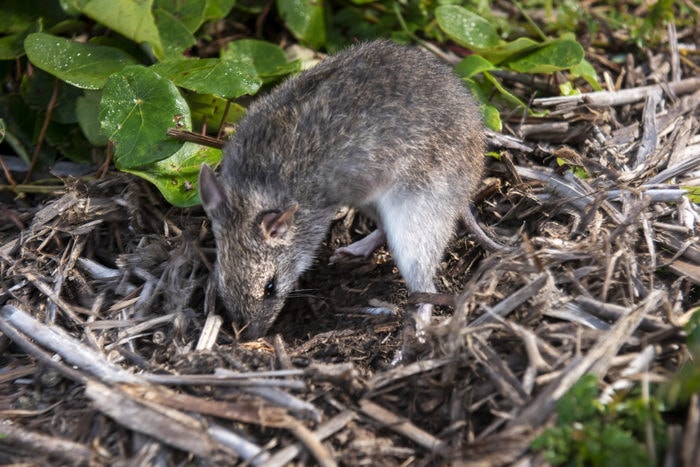The bandicoots in your backyard

“BANDICOOT MENACE”, cried a heading on the letters page of Sydney’s The Sun back in 1951. Armed with a dictionary definition, the newspaper’s aggrieved correspondent declared that the so-called menace was more precisely a “large Indian rat”, and one no more native to Australia than the “rabbit or bulbul”.
What of the supposed foreigner’s crime? The bandicoot apparently posed a grave threat to humans and dogs through “its propensity as a carrier and distributor of ticks”. Other newspaper reports of the day said much the same: the bandicoot was the animal “ticks love best”. The drastic, if improbable, proposed solution was to confine bandicoots to the zoo! Almost 70 years on, bandicoots still roam free, thankfully. But the vitriol directed their way has, if anything, intensified and the tick controversy endures. Some Australian native animals are always receiving a bad rap.
What’s in a name? In one sense, that 1950s rat association was correct. The term ‘bandicoot’ originated on the Indian sub-continent as an 18th-century corruption of ‘pandi kokku’ (literally ‘pig-rat’) from the language Telugu, and ‘bandicoot rat’ has long been the common name for several species of giant rodent found in south Asia. They are significant agricultural pests and can carry dangerous diseases such as plague and typhus. But the black-and-white certainty regarding the origin of Australia’s totally unrelated animals was of course wrong. Only the name is an Asian import.

After being trapped by researchers at North Head, in Sydney Harbour NP, this long-nosed bandicoot stops for a feed on release. (Image credit: Esther Beaton)
Restricted to Australia and Melanesia, the 20 or so true bandicoot species are all ground-dwelling marsupial omnivores. They range in size from, yes, a large rat to a rabbit. Elongated feet and strong forepaws make them expert diggers and, like koalas and wombats, female bandicoots are equipped with backward opening pouches. Insects, insect larvae, spiders and other invertebrates are staple bandicoot fare. Depending on the species, roots, tubers, fruits, seeds, fungi, and even small skinks will also be eaten. They are exclusively nocturnal, sheltering in grass-lined nests by day, emerging at dusk to feed. As bandicoots dig and poke their conical snouts into the ground foraging for food, they aerate soil and keep pests in check – diminutive marsupial gardeners promoting ecological health.
‘Bandicoot’ first appeared in an Australian context in 1799 when George Bass described encounters with Aboriginal people in Van Diemen’s Land. Here, the “bones of small mammals, such as opossums, squirrels, kangooroo rats, and bandicoots were numerous round their deserted fire-places”. Other early observers, like Bass, either mistook bandicoots for rats, or dismissed them as ‘rat-like’, and not on a par with exotic creatures such as the platypus or echidna. But as a synonym for rat, or a rat-like native animal, the name stuck, and the bandicoot entered Australian folklore. By the mid-1820s bandicoots had become synonymous with poverty and deprivation. Undernourished, worthless livestock were “miserable bandicoot cattle”. An unhappy person was as “miserable as a bandicoot”.
In 1877 the Queensland government set up a ‘marsupial board’ in each regional pastoral district that paid a bounty to “encourage the destruction of marsupials and dingoes”. Not even the smallest creatures were spared from the merciless scheme that ran for more than 50 years. Such was their status as despised vermin that during one 15-month period in the early 1900s, a single Queensland marsupial board shelled out for more than 33,000 bandicoot, pademelon and rat kangaroo scalps. The going rate was a mere twopence a scalp. Yet waste not, want not – more than a few scalped marsupials must also have ended up in the pot. The Australian edition of the famed Mrs Beeton’s Book of Household Management included recipes for a veritable menagerie of native fauna, including bandicoot stewed in milk!
This is an extract from Issue 146 of Australian Geographic out now.




